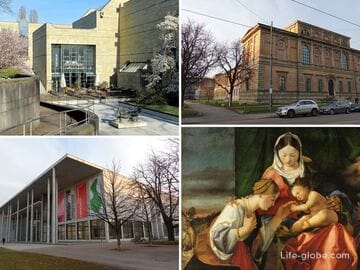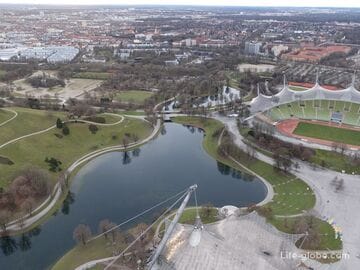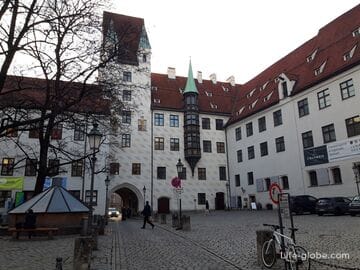The Nymphenburg Palace (German: Schloss Nymphenburg) is a palace complex that is one of the grandest royal palaces in Europe and a popular attraction in Munich.
Near the Palace lies Palace Park, Munich, who together with the Palace are one, and one of the best and largest Royal castles in Europe.
The Palace is included in the list of Bavarian sites.
The Palace was built starting from the year 1664 by the decree of the elector Ferdinand Maria to his wife Henriette Adelaide of Savoy, who earlier gave birth to the long awaited heir to the throne - of Prince-elector max Emanuel (later king Maximilian II).
The construction of the Palace was carried out according to the plans of architect Agostino barelli.
The Central pavilion "Lusthauß Nymphenburg" was built in 1675 by Italian models in the Baroque style. Originally, the Palace is a cubic pavilion, surrounded by a Church, several outbuildings and outbuildings, and a small walled garden, designed in geometric shapes. About 1679, the Palace was almost completely finished in its first form.
In Munich for many years served as the main summer residence of former rulers of Bavaria of the Wittelsbach dynasty.
During the history of the Palace with an adjoining garden was transformed and expanded, including the construction of new pavilions and outbuildings that have become an integral part of the Palace. During the reign of elector max Emanuel Nymphenburg Palace received its present dimensions.
Today, the Nymphenburg Palace, together with the adjoining Palace Park is one of the most famous landmarks of Munich and one of the best Royal palaces of Europe.
The Palace is open to the public, there are halls, rooms and museums, and in the Park of the Palace, among others, are pavilions that are available for visitors. The Palace remains the home and office of the head of the House of Wittelsbach.
The Palace complex of Nymphenburg is located in the Western part of Munich. From the city centre to the main entrance of the Palace is the Central Palace channel Schlossgartenallee (Schloßgartenkanal) with a fountain and access of the alley. In the canal inhabited by ducks and swans, and on cold winter days, when the water in the canal freezes, the canal is used for skating.
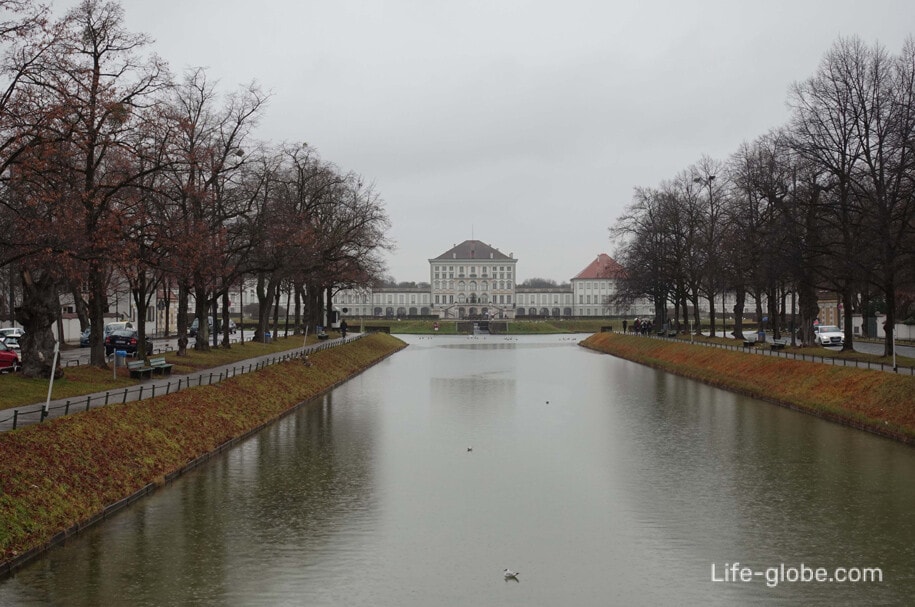
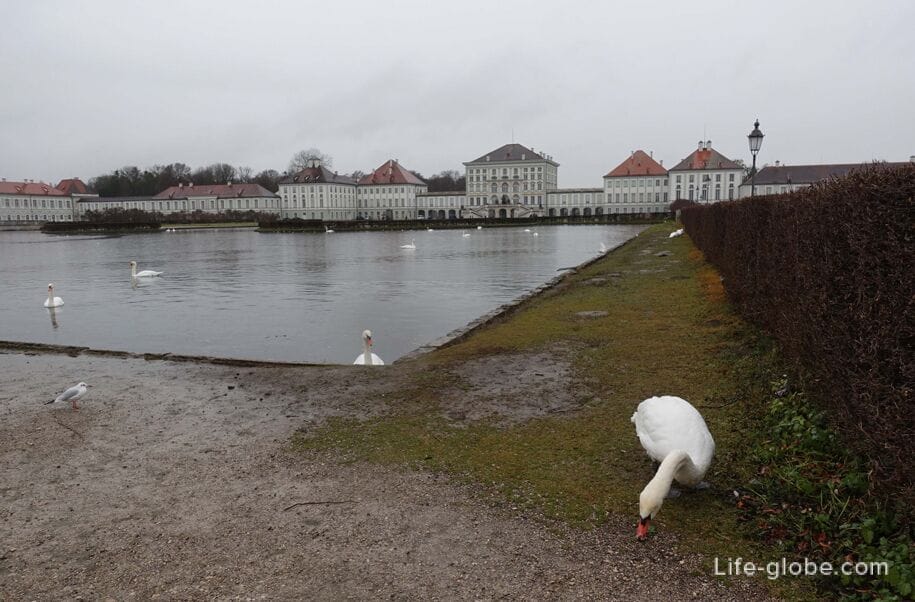
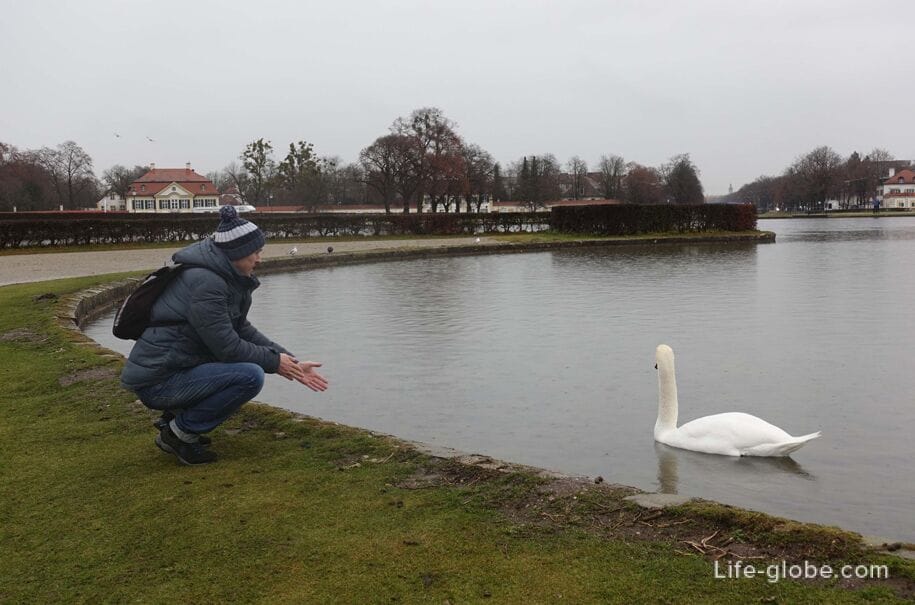
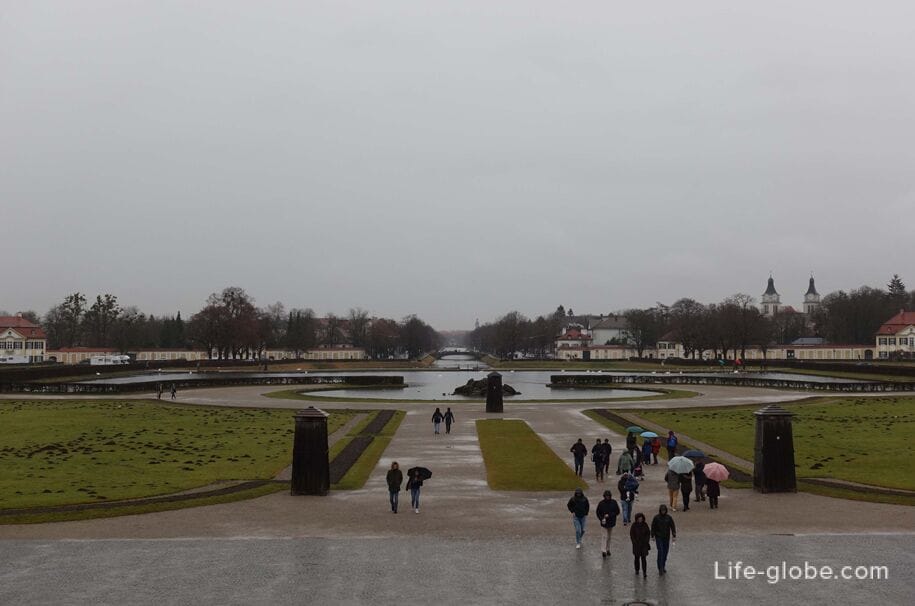
Nymphenburg Palace
The facades of the Palace have a total length of somewhere of 700 meters, consist of a main hall, galleries, the South and North wings. Near the Palace there is Parking.

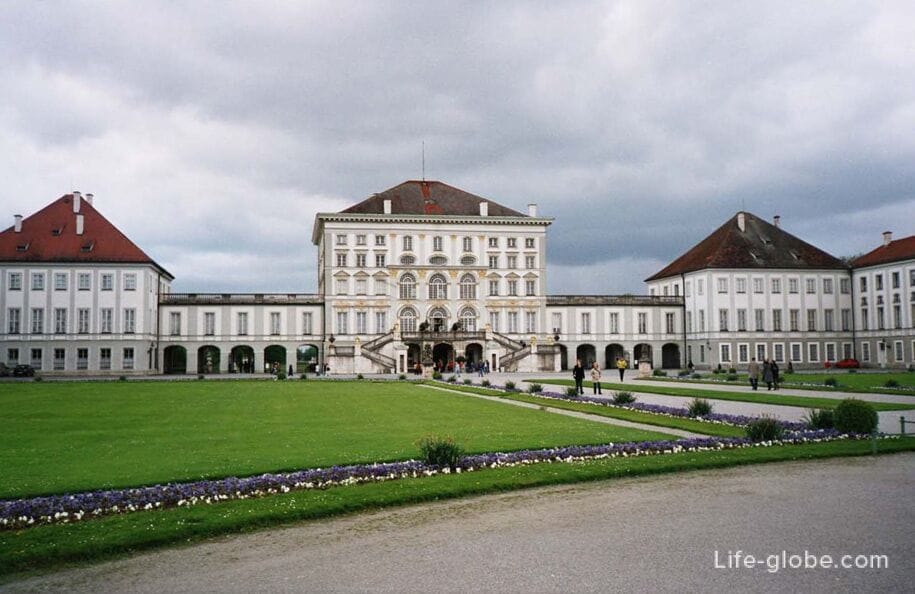

The entrance for visitors is through the main building. Through the arched passages near the main building of the Palace you can get to the Park if the purpose of the visit is not a visit of the interior and the museums of the Palace, but only an external inspection and a walk in the Park (the entrance to the Park, in addition to the pavilions - free).
In the lobby of the main (Central) building, a shop, a Palace ticket office, where you can buy tickets and information facilities.
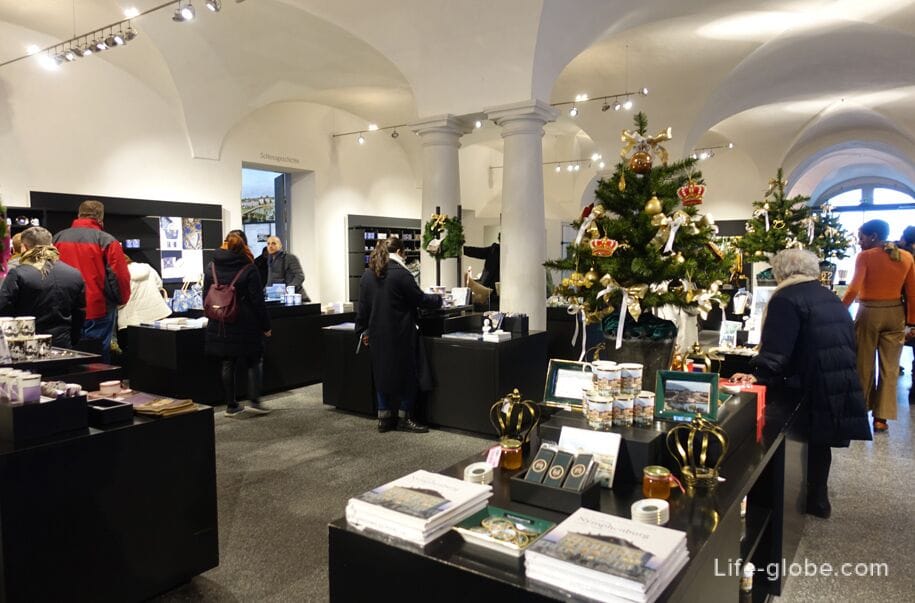
Some of the halls and rooms of the Palace still display their original ornaments in Baroque style, while others were redesigned in Rococo or neoclassical.
At the moment you can only visit part of the interior of the Nymphenburg Palace
The Central pavilion
Central to the pavilion is a famous Ballroom or Stone hall (Ceremonial hall / Festsaal), main features of which belong to the first period of construction in the Rococo style. Hall, richly decorated with stucco and frescoes, was used for balls and receptions. The painting on the ceiling represents the heavens and the Olympic gods.
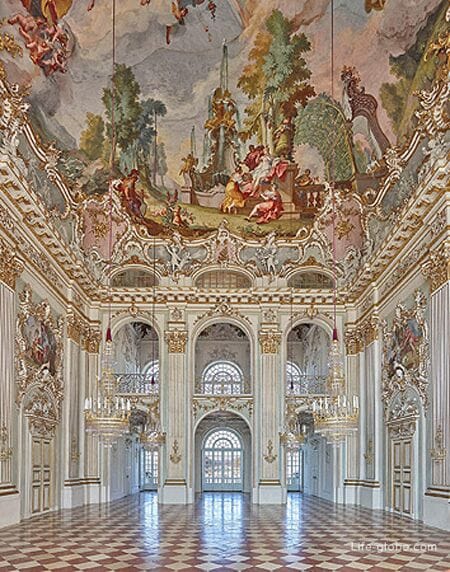
With the two sides of the ceremonial hall in the Central pavilion there is a North and South rooms - guest: hallways, offices, bedrooms, halls for audience, and a bathroom king Maximilian II;
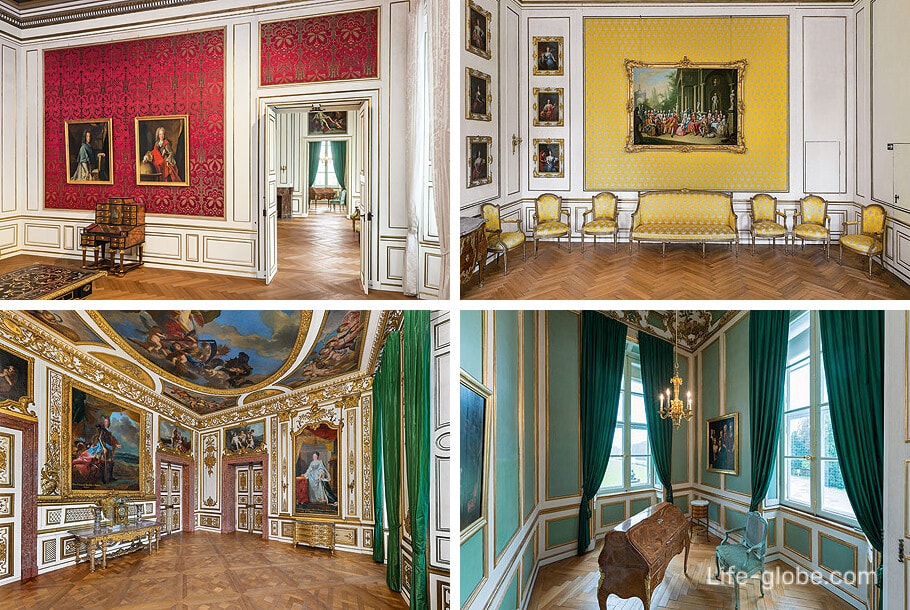
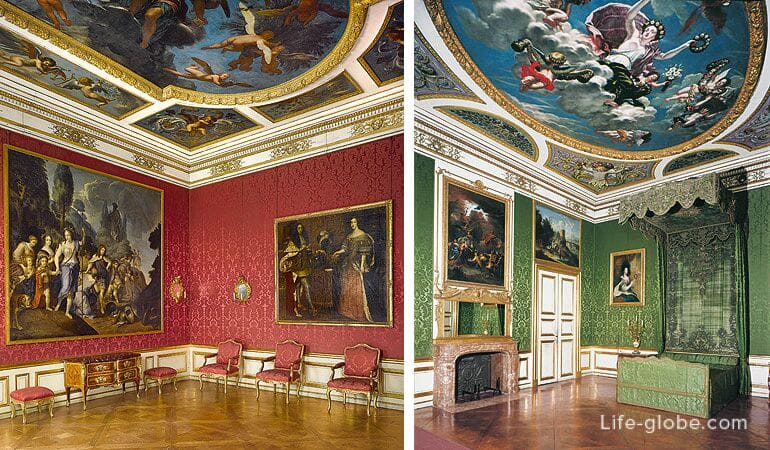
South and North galleries
North and South galleries - indoor connecting corridors that connect the Central pavilion with the South and North pavilions. Along the gallery are several small rooms.
Wall of the southern gallery are decorated with large scale paintings of the Bavarian castles.
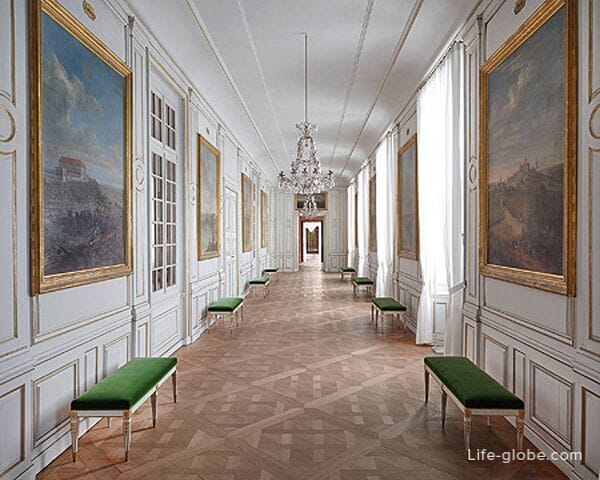
The North gallery was used for the main access to the chambers of king max Emanuel, which is located in the Northern pavilion of the Palace complex. King's chamber, now inaccessible to the public.
Corridor walls decorated with large scale paintings, which, in particular, give an idea of the layout and design of buildings and outdoor structures in 1722-1723 he

The Western side of the North corridor adjacent to the three rooms:
- large gallery of beauty of max Emanuel, which has six portraits of women at the court of Louis XIV;
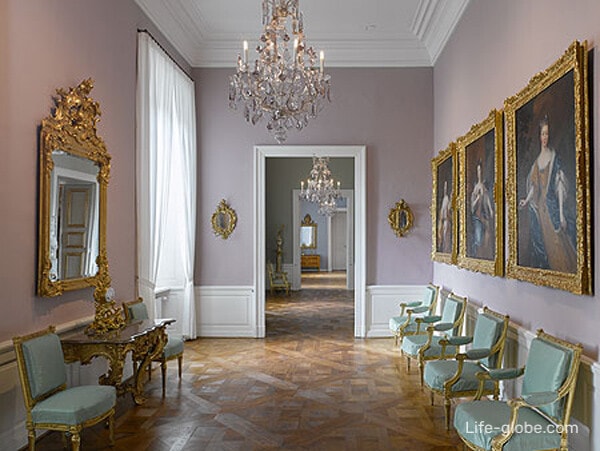
- heraldic room, on a wall carpet depicting the coat of arms Below and the Palatinate-Sulzbach of elector Karl Theodor and his first wife Elisabeth Auguste. Elector Carl Theodor depicted in a marble bust "like Hercules" (about 1780);

- room Karl Theodor, in which are portraits of the elector Karl Theodor in the image of the Grand Master of the order of George and his first wife Elisabeth Auguste von Pfalz-Sulzbach, as well as a portrait of the second wife of elector Karl Theodor Maria Leopoldina of Austria-este.

South hall
In the South pavilion or the Queen's apartments located:
- "Gallery of beauties" (Schönheitengalerie) of king Ludwig I, placed in the room, which originally served as a dining room.
The room is decorated with a series of portraits of beautiful women 1827-1850, and not only the court, as in the gallery of the beauty of max Emanuel, but women from all walks of life. The ideological inspirer of creation of the portraits were king Ludwig I.
German court painter Joseph Karl Stieler between 1827 and 1850 portrayed 36 "beautiful" women of Munich. The most famous of the portraits are: the daughter of a shoemaker Helen Sedlmeir, dancer Lola Montez, the mistress of Ludwig and Marianna Marquesa Florenzi - mistress of Ludwig, whom she visited more than thirty times.
Two additional porter (Carlotta von Breitbach-Berresheim and Anna Griner) was created by artist Frederick Durkon in 1861 after the death of Stieler.
The portraits were originally created for the ballroom of the Munich residence.
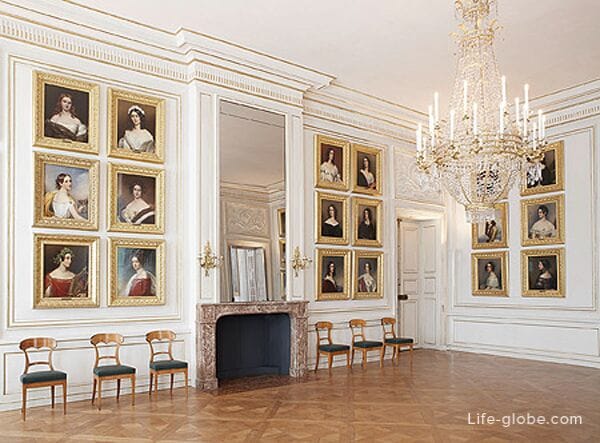
Portrait Of Helen Sedlmayr

Portrait Of Lola Montez
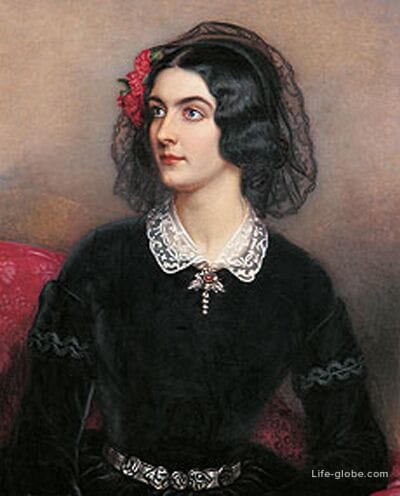
- bedroom Queen Carolina, preserved in its original decor. The mahogany furniture was established in Munich, about 1815.
In 1842 the Bavarian crown Prince Maximilian (II) and Maria Prussia settled in the Palace of Nymphenburg. 25 Aug 1845 in this bedroom Princess gave birth to an heir, later king Ludwig II. The next day the child was baptized in the Stone hall. Two children's bust on a pedestal in the room dedicated to the crown Prince Ludwig and his brother Otto. Portrait of mother Marie hangs in the gallery of the beauty;

- hall Queen. Elegant mahogany furniture for the hall of Queen Caroline, was created in Paris. According to courtly tradition, the furniture is along the walls. Smart and confident woman, educated, an artist, who attached great importance to a representative, but at the same time the home environment;
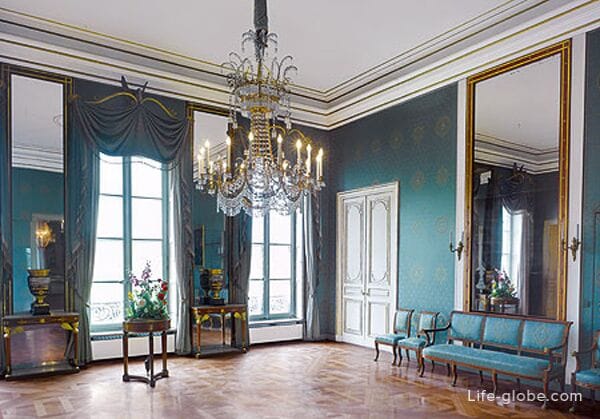
- Royal Cabinet, maid's room and a small corridor.
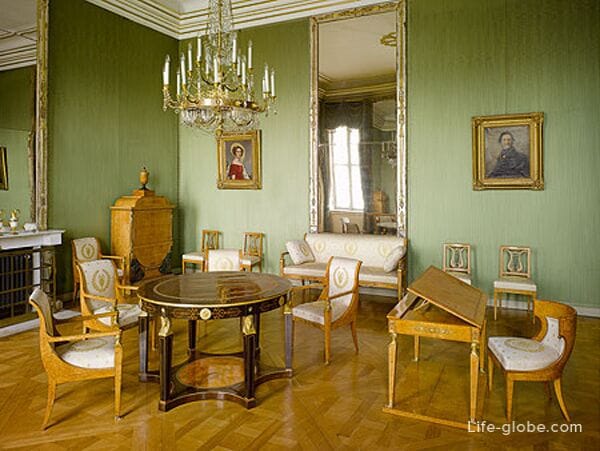
The Northern pavilion
The Northern pavilion or the king, now inaccessible to the public.
Only in the second North pavilion (entrance from the yard) are available in the Palace chapel, which was begun when the elector Max Emmanuel in 1702 project Enrico Zuccalli, Antonio Viscardi. Political developments made it possible to complete the chapel (architect: Joseph Effner) only since 1715.
In the chapel the Baroque altar in which is a group of figures - Christ and Mary Magdalene. Arch and colorful frescoes from the life of St Mary Magdalene add a touch of classic Rococo Church interior.
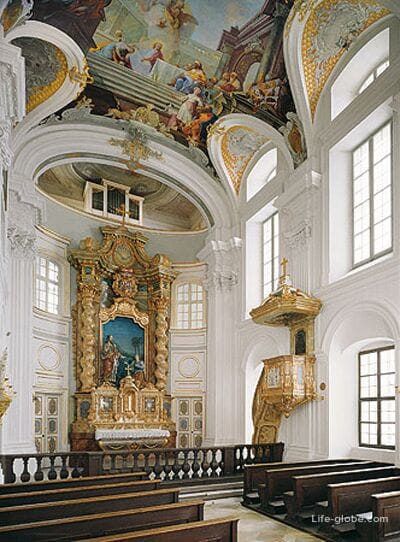
!!! Possible to visit the halls and rooms of Nymphenburg Palace, with descriptions, can be viewed here.
Museums in the Palace of Nymphenburg
Apart from the rooms and halls of the Palace, the walls of Nymphenburg are two museums
Museum crews
Museum of carriages (Marstallmuseum) is one of the most important museums of its kind in the world and is located South of the former Royal stables.
In the collection of the Museum are the coaches of the days of the Bavarian kings of the house of Wittelsbach with exhibits from Germany, France and England.
In the exhibition are more than 40 representative of the carriages, sleds, carts and accessories for horse riding, which describe, including 300-year history of princely carriages and the culture of driving and riding.
The highlight of the Museum is the coronation coach of Emperor Karl VII, is one of the most beautiful state carriages of the French Rococo. A rich supply of gala carriages and the slide of Wittelsbach completed a magnificent carriages of king Ludwig II in the 19th century.
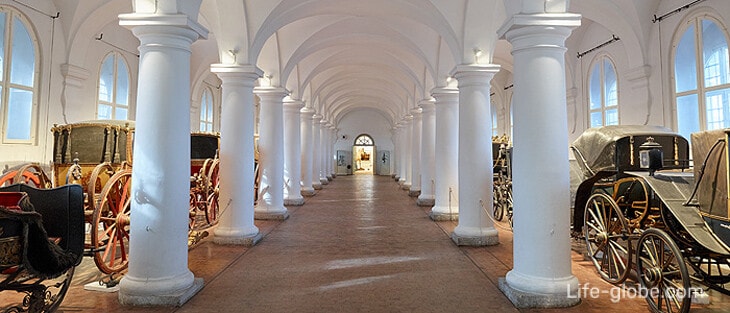
The coronation coach of Emperor Karl VII
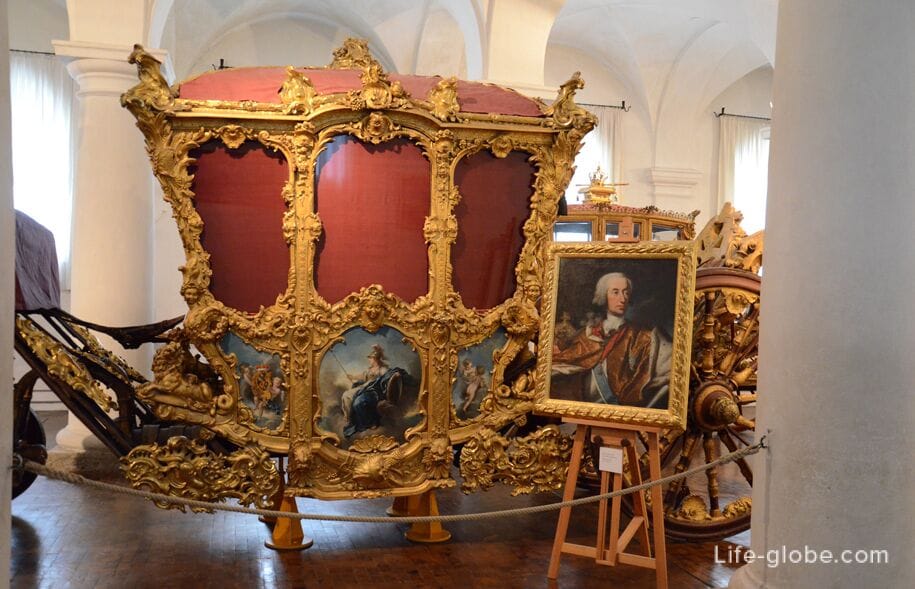
Carriage Of Maximilian I Joseph
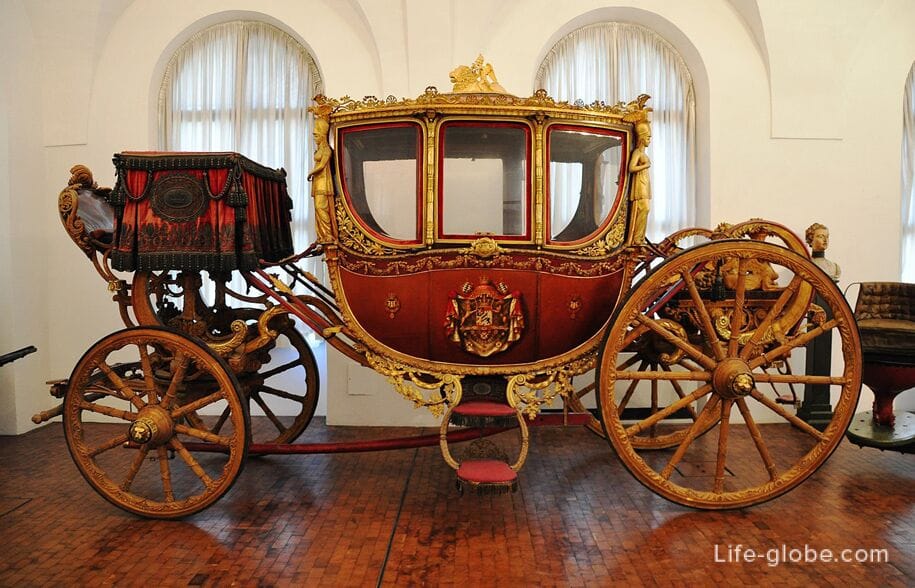
The carriage of king Ludwig II
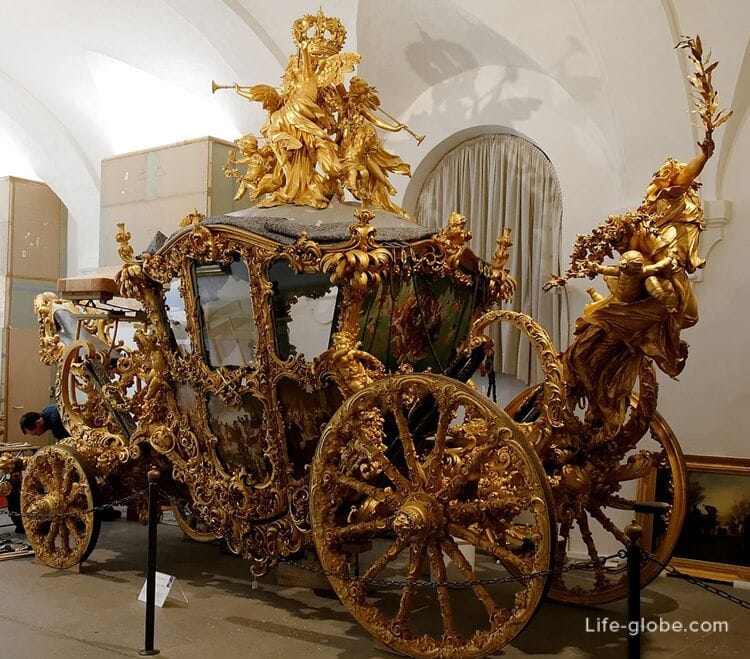
The porcelain Museum
The porcelain Museum (Porzellanmuseum) is a unique private collection of porcelain from 18 to 20 century and located in the South wing of Nymphenburg Palace.
The production of porcelain products of high quality was created at Nymphenburg in 1747. Firm is one of the last porcelain manufacturers in the world, where every detail is made exclusively by hand.
The collection was founded by albert Boymom, which took control of the manufactory in 1888. To improve the artistic quality items, he has collected porcelain Nymphenburg as a model template. In 1912, his eldest son took over these tasks. The collection, which is complemented by the porcelain from the possession of the Bavarian Palace Department, is still expanding from private sources.
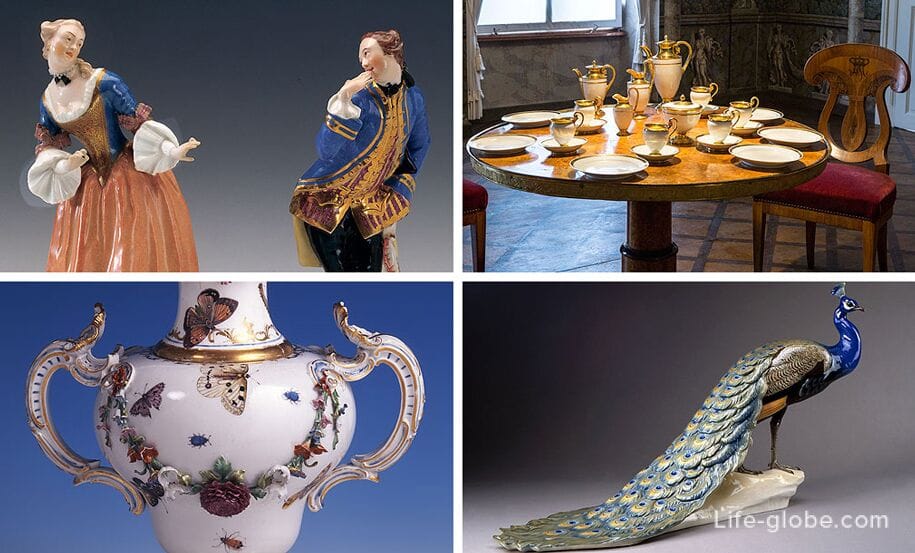
P. S. in summary Nymphenburg Palace consists of the Palace rooms, halls and corridors located in the Central building of the Palace, in two adjacent buildings side-galleries in the South wing, a chapel in the North wing and two museums that are also part of the Palace and part of the Palace complex.
The Park of Nymphenburg Palace
Initially, the Nymphenburg Palace had a small adjacent Palace garden (Schlosspark Nymphenburg / the Nymphenburg Schlosspark), made in Italian style.
Starting in 1701, Max Emanuel had the Palace enlarged, changed garden design in the style of the French Baroque and has created a channel that led water from the river Würm (Würm) in the Park.
In the future, the Park has developed and transformed. The Park was built building, designed to stop at the court.
The creation of a large landscape Park based on English models was started by Friedrich Ludwig von Schelle in 1804, with the southern part of the Park, which was completed in 1810-1823 years Northern part. Skelly was also the Creator of the English garden in Munich.
Today, the Park of Nymphenburg Palace is almost 300 hectares and has aCentral channel that divides the Park in half (Northern and southern) and which is the Grand cascade - a waterfall in the Baroque style; the fountains, alleys and walkways; rental restaurant; statues and sculptures; two lakes (Badenburg and Kleiner) and monomer Apollo-Tempel (Apollo-Tempel) - the temple is a rotunda, built according to the plans of Leo von Klenze in the years 1862-1865.
During the summer season (April to mid-October) in the center channel can go on the gondola.
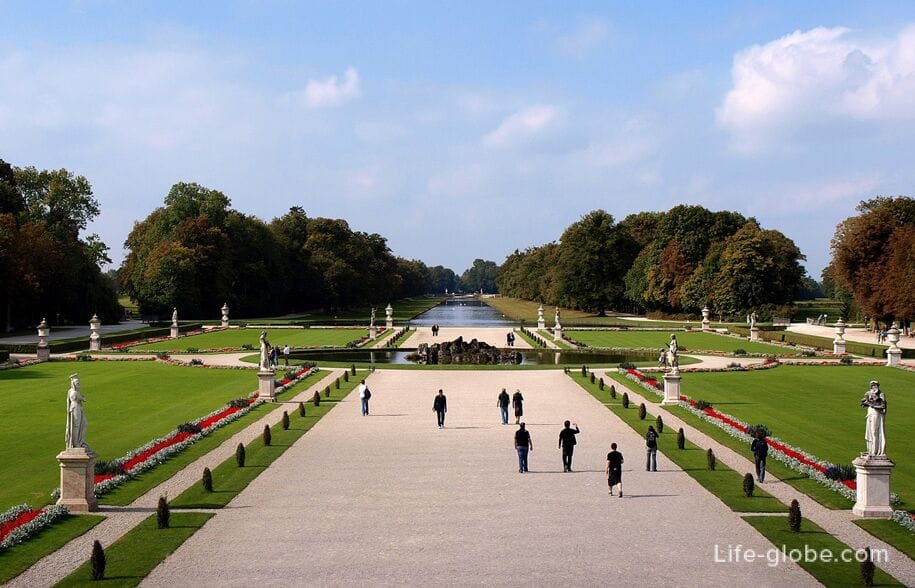
The Grand Cascade. The statue of the ISAR to the right of the Danube on the left
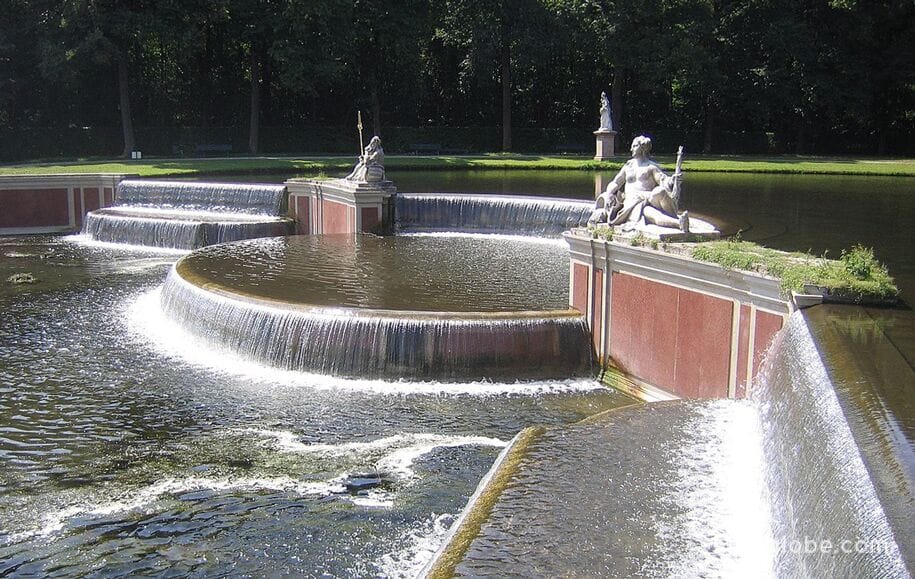
View of Nymphenburg Palace from Palace Park
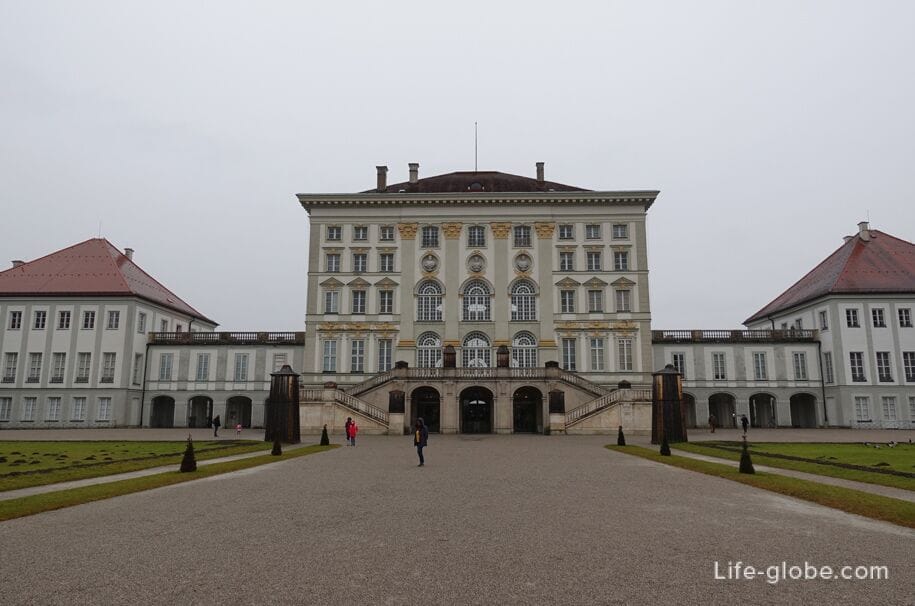

In Geranium house Park (Geranienhaus), Skellam built in 1816 as a place for growing foreign ornamental plants, is a permanent exhibition, open from early April to mid-October and explaining to visitors the idea and concept of the Park, from creation to maintenance.
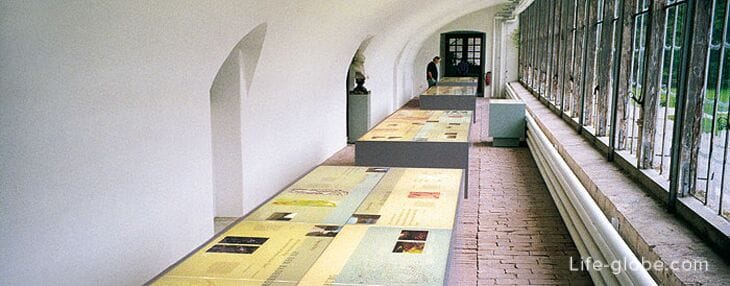
Entrance to the Park is free (free).
For a fee in the Park you can visit several pavilions - palaces in miniature
City center
City center (Amalienburg) was built in 1734 - 1739 years by architect Francois de Couville for the wife of elector Karl Albrecht Maria Amalia.
The building was designed as a small independent Palace complex and today it is one of the most valuable works of European Rococo. The interiors of the Palace are made with a dedication to excellence.
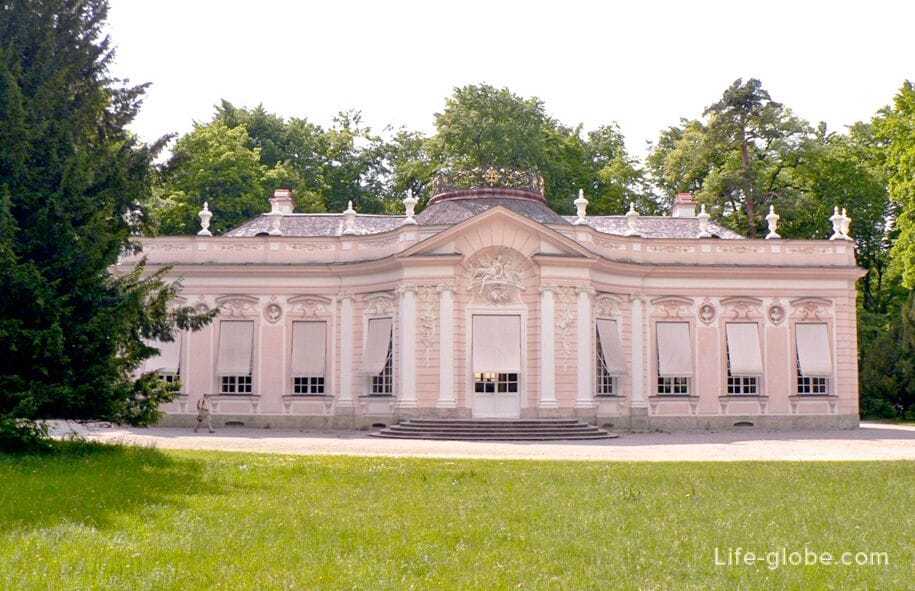
Palace city center has several rooms, including:
- The hall of mirrors or a Large salon, which has a large part of the first floor, and which forms the center of the Palace is a round room with a flat dome. Silver, whitish and pale blue are the main colours of the room.
In the interior of the hall interspersed with large Windows, mirrors and doors, creating a play of light and pushing the spatial boundaries of the room;
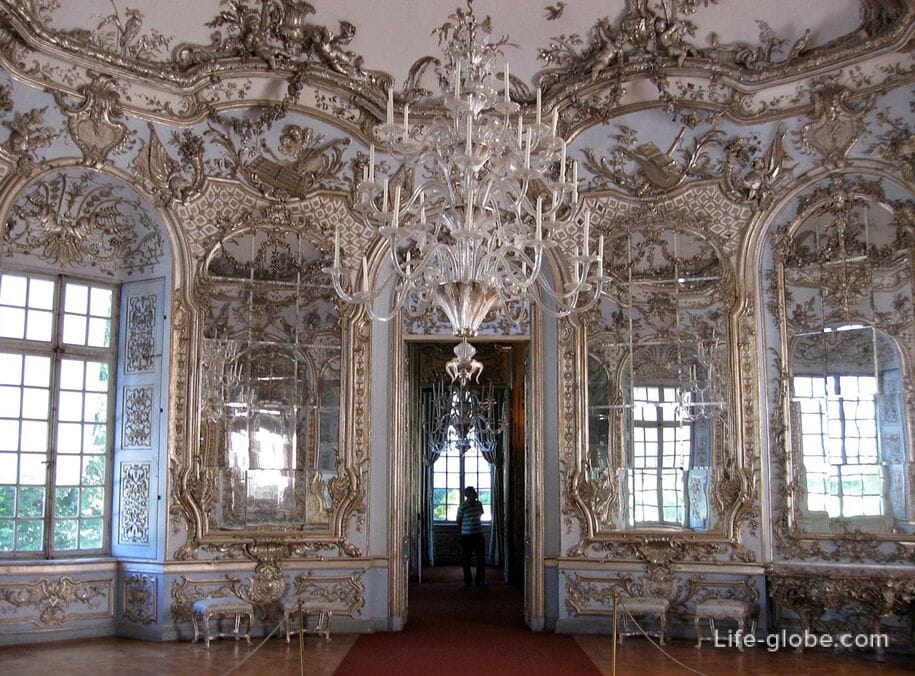
- the relaxation room or the yellow room also has a rich decoration - lemon color of the walls has silver thread trim. The cladding was made court sculptor Johann Joachim Dietrich is one of the best work on the court thread at the time.
In the room there are portraits of the elector Karl Albrecht and Maria Amalia of the elector in hunting dress;
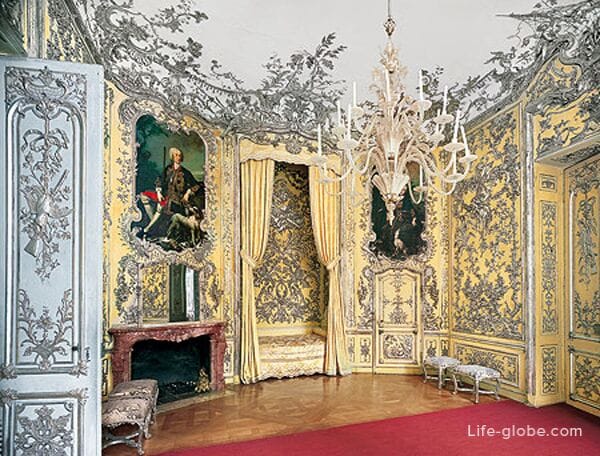
- hunting room, is the spatial analogue of the lounge and is furnished with the picturesque, small salon, where paintings in the Rococo style included in silver wall finish and arranged in two rows - one above the other.
Paintings by Peter Jacob Horemans depict scenes of Royal hunting and court festivals, including the elector with his wife;

- room pheasant distributes exotic atmosphere. Decoration for walls painted and coated with wax in Chinese style on fabric Wallpaper. The motive of the pheasant treats pheasant garden, which was created when Amalienburg in 1734;
in the dog and gun room contains decorative paintings with scenes of hunting and hunting trophies;
- kitchen, blue-white ceiling of which is painted with Chinese scenes, and the walls lined with Dutch tiles with shaped panels with flower vases and Chinese motifs.
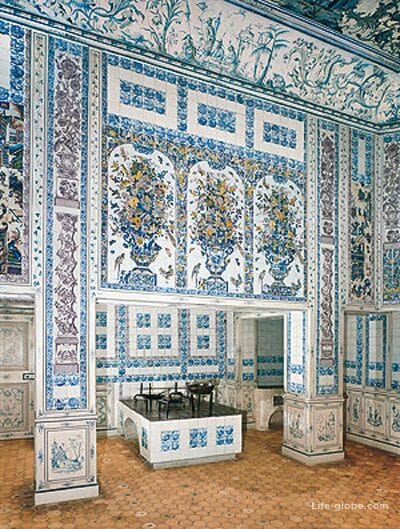
Badenburg
Badenburg (Badenburg) served as a bath house was erected 1718 and 1722 according to the design of Joseph Effner.
The building contains a Ballroom and several rooms, including the hallway, bedroom, study, dressing room. Bathroom with heating system, kitchen, and other rooms located in the basement.
The ballroom is decorated with stucco and an arched mural, originally the work of Jacopo Amigoni. After the devastation of the Palace during the Second world war, was carried out restoration work, as in most parts of the Palace.
Bathroom is decorated with Dutch tiles as wall cladding at the bottom and slabs of marble plaster on the upper part with a gallery and a ceiling painting with motifs of the fountain.
The other rooms of the building are decorated with wall panels and Chinese paper Wallpaper.

Ballroom
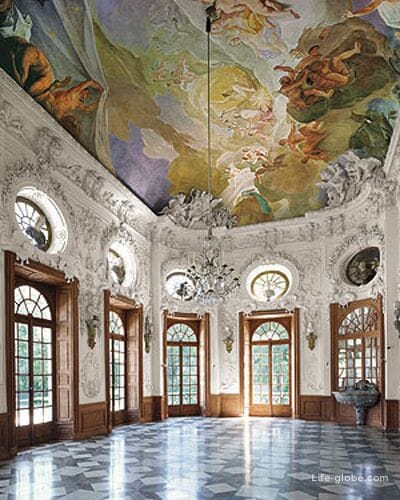
Bathroom
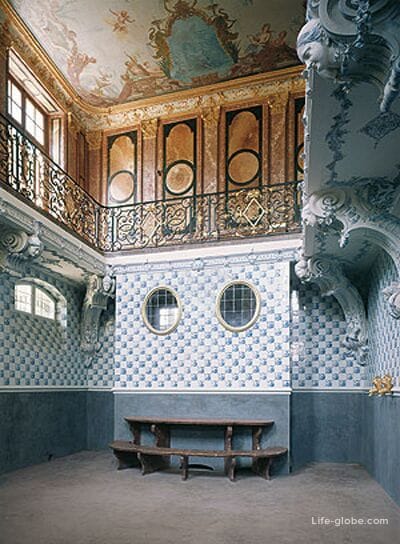
Pagodenburg
Pagodenburg (Pagodenburg) is a small octagonal two-story pavilion, built by Joseph Haffnera from 1716 to 1719 years as a "rest house" and "tea house".
The pavilion was used for tea parties and relaxing after a game of boules - entertainment of those times like the game of Golf.
On the ground floor there is a hall in the interior is dominated by blue and white color with exotic items and Dutch tiles.
On the upper floor are small rooms - the boudoir and the Cabinet rest (Antichambre) with Chinese Wallpaper and black lacquer painted on the walls.

Hall first floor

Chinese Cabinet

Magdalenenklause
Magdalenenklause (Magdalenenklause) is a building that mimics the old structure and is located in a wooded area of the Park. It was built by the designs of Joseph Effner in 1725 - 1728 years.
Cracks in the masonry and crumbling plaster visualize the fragility of all earthly and the lack of the eternal on earth.
The building is considered as an early representative of the monastery and the ruins of architecture in Germany.
The structure was conceived as a place for seclusion and was intended for solitary reflection and meditation.
Magdalenenklause has the oratory (chapel) of St. Mary Magdalene with a grotto and a strict room.
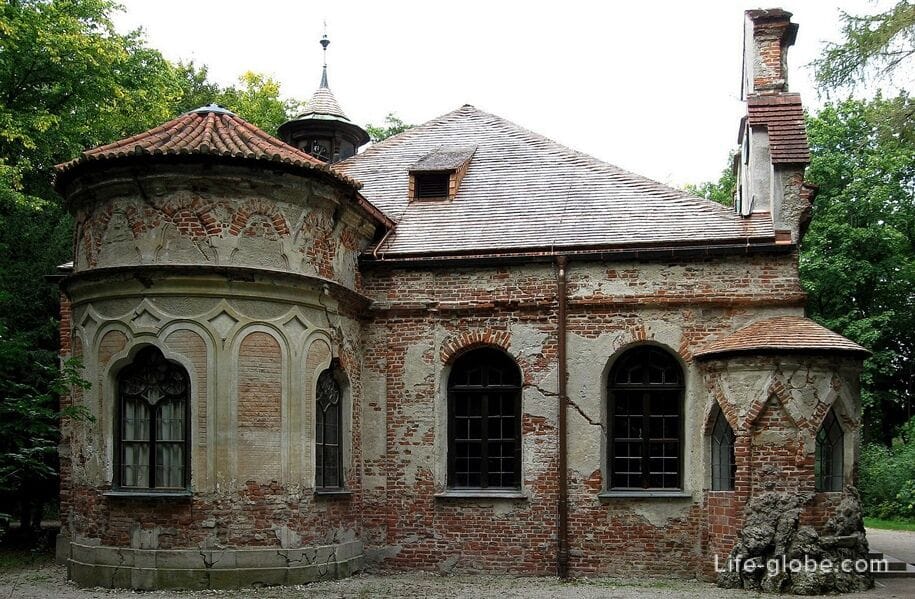
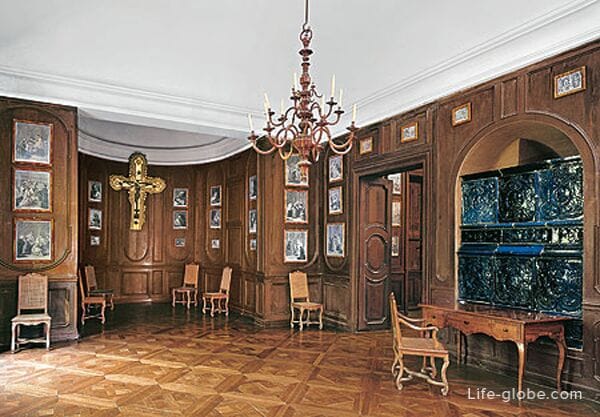
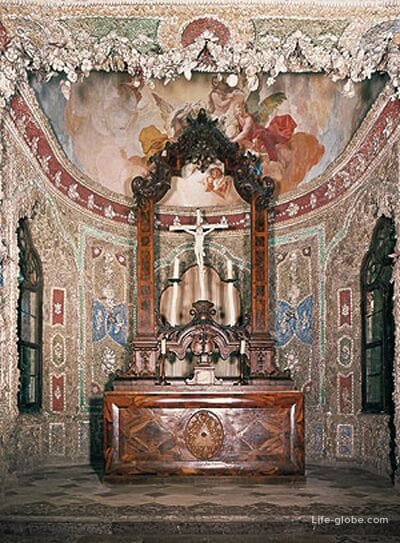
Practical information
Nymphenburg Palace is located in the Western part of Munich in the district Neuhausen-Nymphenburg (Neuhausen-Nymphenburg), at the address: Schloß Nymphenburg 1. 6.5 kilometres from the Central square Marienplatz.
Tickets to the complex of Nymphenburg Palace:
- you can purchase a ticket and, therefore, visit only the Palace Nymphenburg with its available halls and rooms: 8 EUR - adults; 7 € - reduced;
- you can attend separately two Palace Museum (Museum of the crews + the porcelain Museum): € 6 full, 5 EUR preferential;
- you can visit the only Park pavilions of the Palace (Parkburgen) - city center Badenburg, Pagodenburg and Magdalenenklause: 4 euros - reduced. The Park pavilions are open for visitors only during the summer period, from 1 April to 15 October;
- you can buy a combined ticket to visit all facilities of the complex of Nymphenburg Palace castle + two museums + pavilions of the Park (Park pavilions are closed in winter):
- 1 APR - 15 Oct: 15 Euro - full; 13 euros - reduced;
- 16 October - 31 March: € 12 - full 10 € - reduced.
Children and adolescents up to 18 years - free entrance.
All tickets can be purchased at the main building of Nymphenburg Palace.
For the Palace there is an audio guide in several languages (German, English, Italian, French, Spanish, Russian, Chinese / Mandarin and Japanese): € 3.50; groups of 15 people € 2.50 per person.
There is also a special audio guide for children from 6 to 12 years (fee).
The Palace and Park Nymphenburg themed tours for adults and children.
The exact admission fees, and hours of work and conditions we recommend you to contact just before visiting on the official website.
The website of Nymphenburg Palace: schloss-nymphenburg.
Near Nymphenburg Palace
Botanical garden Munich-Nymphenburg (Botanischer Garten München-Nymphenburg) is located in the North-East of the Palace and Park Nymphenburg, but are not part of the Palace complex. The Botanical garden is partly separated from the Park wall and the street.
Garden address: Menzinger Str. 65. Website garden: botmuc.
The Museum "Man and nature" (Museum Mensch und Natur), an interactive natural history Museum, which tells about the formation of the Solar system, Earth's history and the development of life, anatomy and human biology, the nutrition and the environment, and the relation of man to nature, etc.
Until may 2020, the Museum was housed in the North wing of the Nymphenburg Palace, after began the erection of a separate building. The Museum, due to open in 2025 under a new name - BIOTOPE-natural history Museum of Bavaria (BIOTOPIA-Naturkundemuseum Bayern).
Museum website: mmn-muenchen.
Museum background Kreibig Erwin (Erwin von Kreibig Museum), which opened in 1991 and named in honor of the Munich artist and today showcases the work of artist Kreibig permanent exhibitions, temporary exhibitions with the works of other regional artists.
The artist has left behind quite a legacy of drawings and paintings, which he often depicted strong women. The Museum operates with the support of the Fund Erwin von Kreibig, which annually awards Nymphenburg art award painting.
The Museum is located in front of the Nymphenburg Palace, with its southern side, at: Südliches Schloßrondell 1. Museum website: kreibig.foundation.
Where to stay near Nymphenburg Palace
The 3-star hotel Kriemhild am Hirschgarten with Wi-Fi throughout, free Parking and a delivery service of food and beverages in the room.
The rooms: modern conveniences, including free Internet access. In the morning Breakfast buffet. Link to the hotel
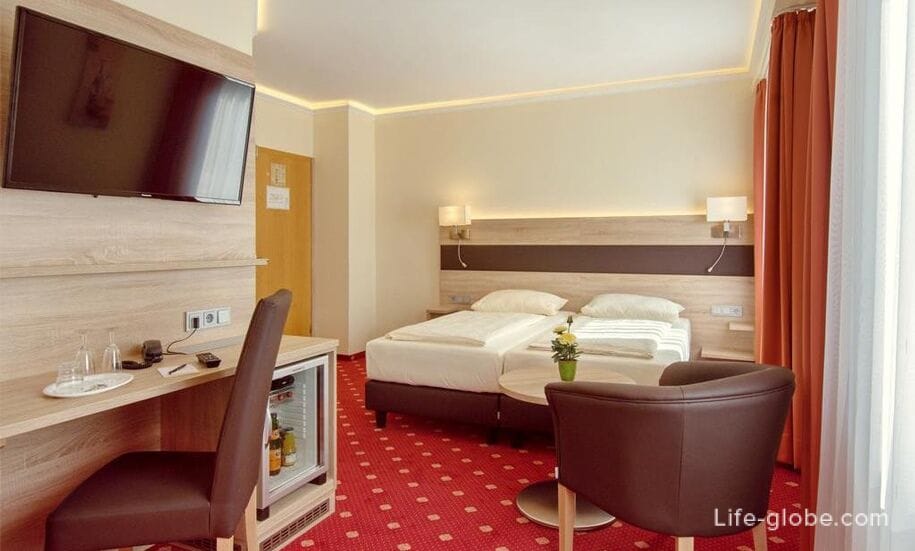
The family-run Laimer Hof am Schloss Nymphenburg with a bar, restaurant, free Wi-Fi, bikes and Parking.
The hotel was built in 1886 and is a Villa in the neo-Renaissance style, with rooms individually decorated in a classic style. The rooms feature satellite TV, a Desk and a private bathroom. Link to the hotel
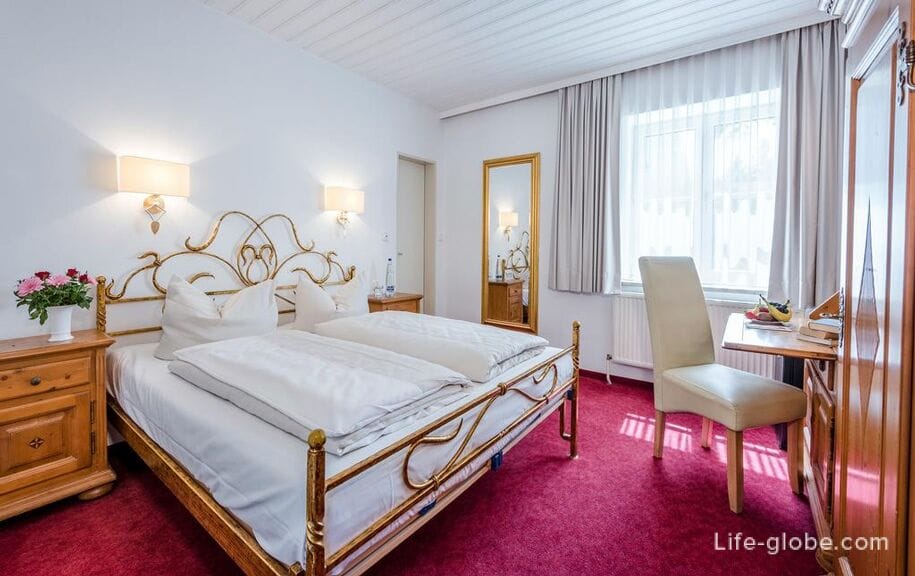
Villa am Schlosspark features a garden, free Wi-Fi and Parking.
Many rooms feature a balcony or terrace with views of the garden. Link to guest house
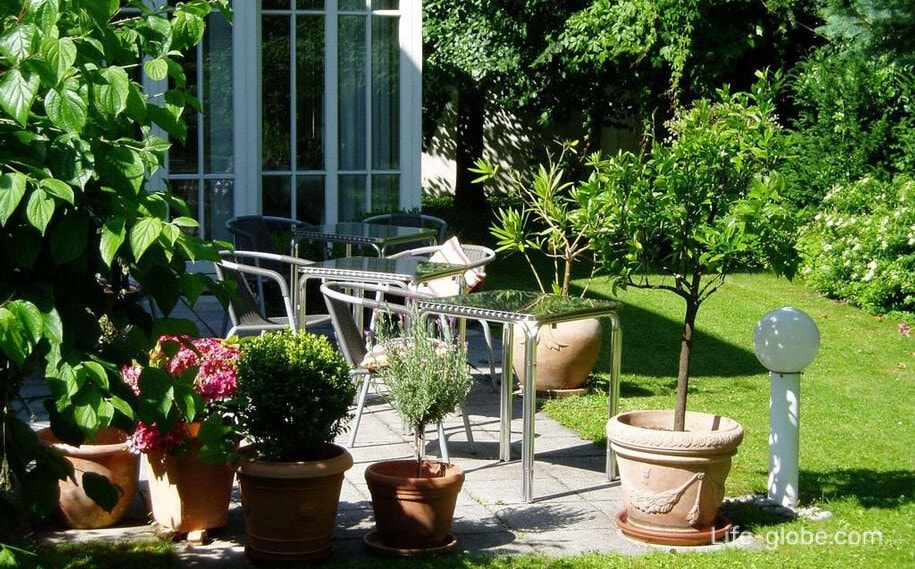
All accommodation in Munich, including near the Palace of Nymphenburg, you can view and book here






